Mega Archive: Part XXIII: From Landstalker to Chakan: The Forever Man
By Mento 0 Comments
Welcome back to the Mega Archive! We skipped another week, this time due to Giant Bomb XL charity streams and the careful moderation thereof, but now it's time to dig further into the November 1992 release catalogue of the Sega Genesis/Mega Drive. November 1992 was very dissimilar to the present November of course, as Democrats celebrate their candidate's electoral victory over a crappy one-term Republican President.
If you wanted an idea of what the Genesis release schedule looked at this point in time, this entry has nothing short of five licensed games: half the games we've covering this week are based on animated TV shows, movies, and - in one case - a fast food outlet. We also have another peripheral pack-in, another The Bitmap Brothers Amiga/ST port (to follow Xenon 2 from last time), another horizontal shoot 'em up, an isometric RPG classic, and an ominous portent of the upcoming dark and gritty '90s comic book fad. I'm excited to dig in.
First, a quick reminder of how we got here:
| Part I: 001-020 (Oct '88 - Dec '89) | Part IX: 131-145 (May '91 - Jun '91) | Part XVII: 256-270 (Mar '92 - Apr '92) |
| Part II: 021-035 (Dec '89 - Mar '90) | Part X: 146-160 (Jun '91 - Jul '91) | Part XVIII: 271-285 (Apr '92 - Jun '92) |
| Part III: 036-050 (Apr '90 - Jul '90) | Part XI: 161-175 (Jul '91 - Aug '91) | Part XIX: 286-300 (Jul '92 - Aug '92) |
| Part IV: 051-065 (Aug '90 - Oct '90) | Part XII: 176-190 (Aug '91 - Sep '91) | Part XX: 301-310 (Aug '92 - Sep '92) |
| Part V: 066-080 (Oct '90 - Dec '90) | Part XIII: 191-205 (Oct '91 - Nov '91) | Part XXI: 311-320 (Sep '92 - Oct '92) |
| Part VI: 081-098 (Dec '90) | Part XIV: 206-220 (Nov '91) | Part XXII: 321-330 (Oct '92) |
| Part VII: 099-115 (Jan '91 - Mar '91) | Part XV: 221-240 (Dec '91) | Part XXIII: 331-340 (Oct '92 - Nov '92) |
| Part VIII: 116-130 (Mar '91 - Apr '91) | Part XVI: 241-255 (Jan '92 - Feb '92) | Part XXIV |
Part XXIII: 331-340 (October '92 - November '92)
331: Landstalker
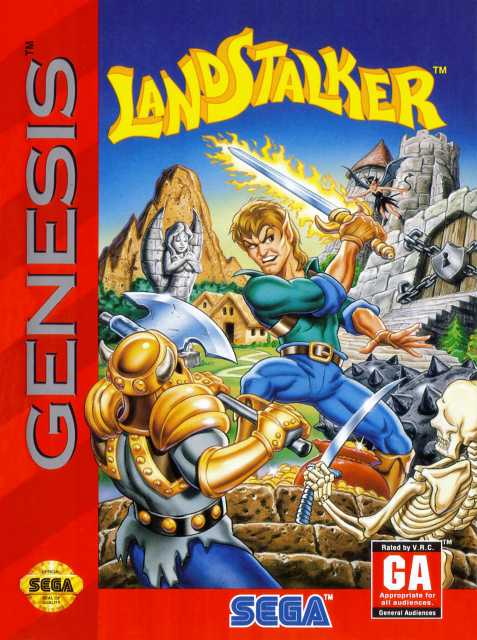
- Developer: Climax Entertainment
- Publisher: Sega
- JP Release: 1992-10-30
- NA Release: October 1993
- EU Release: October 1993
- Franchise: Stalker
- Genre: RPG
- Theme: Elf Boy and Fairy, But Not Those Ones
- Premise: Treasure hunter Nigel is tipped to the final resting place of the indescribably wealthy King Cole, who is presumed to be pretty old if not necessarily a merry soul, and with his new partner sets out to find it.
- Availability: You can get it on Steam right now, or in the Sega Genesis Classics compilation for PS4/XB1/Switch. If you have the Sega Genesis Mini, it's on there too.
- Preservation: I've tried to get into Landstalker a few times, yet despite being an action-RPG and an isometric game - both of which I have a fondness for - it's yet to click. What's odd is that I enjoyed its much more derided Dreamcast sequel, TimeStalkers, as well as Alundra, which was created by a few of the same developers. Either way, the Stalker series is the lesser - in terms of quantity and critical attention - of Climax's two big JRPG franchises that began on the Sega Mega Drive: the other of course being Shining, as in "Force" and "in the Darkness". Perhaps due to its lower profile, the Stalker series is also the more experimental of the two franchises, since after this and Lady Stalker - one of the few times Climax branched out to a Nintendo platform, in this case the SFC - the series got a little strange from Saturn's time-looping Dark Savior onwards.
332: Bio-Hazard Battle / Crying: Aseimei Sensou
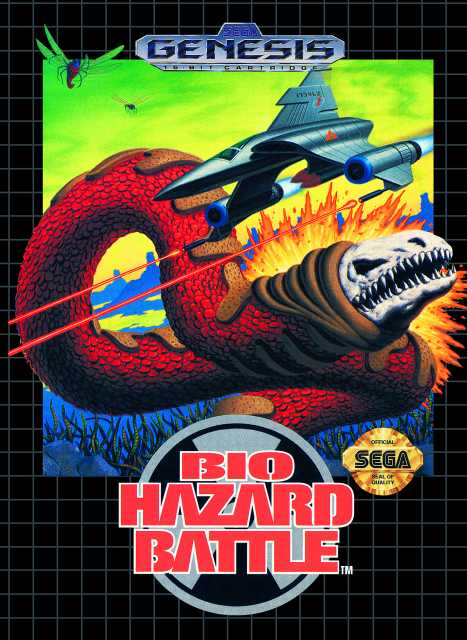
- Developer: Sega
- Publisher: Sega
- JP Release: 1992-10-30 (as Crying: Aseimei Sensou)
- NA Release: December 1992 (as Bio-Hazard: Battle)
- EU Release: November 1992 (as Bio-Hazard: Battle)
- Franchise: N/A
- Genre: Shoot 'em Up (Horizontal)
- Theme: Gross Bugs
- Premise: Umbrella Corporation has... no, wait, let me start over. The planet Avalon has destroyed its own biosphere after years of biological warfare, rendering the planet an inhospitable petri dish. Survivors in bio-engineered bioships (sure saying "bio" a lot) scout ahead after many years in stasis to see if the planet can be reclaimed.
- Availability: You can buy this on Steam or via the Sega Genesis Classics compilation for PS4/XB1/Switch.
- Preservation: Sega probably felt it had been too long - almost a month! - since the Genesis was last graced with a shoot 'em up and put out Bio-Hazard Battle themselves, the latest in a noble line of gooey visceral shoot 'em ups in the vein (as it were) of Life Force and Abanox. BHB's most notable trait after its macabre visuals is the heavy bass synth soundtrack by veteran Sega sound engineer Shigeharu "Nasu" Isoda, who also directed the game. BHB's also one of a small number of shoot 'em ups I've encountered to make the environment just as much as an antagonist as the enemy waves; while you can't get damaged by touching the ceiling/floor like in Gradius, the game will speed up certain scrolling sequences to make it easier to get smushed between a wall and the edge of the screen.
333: Batman: Revenge of the Joker
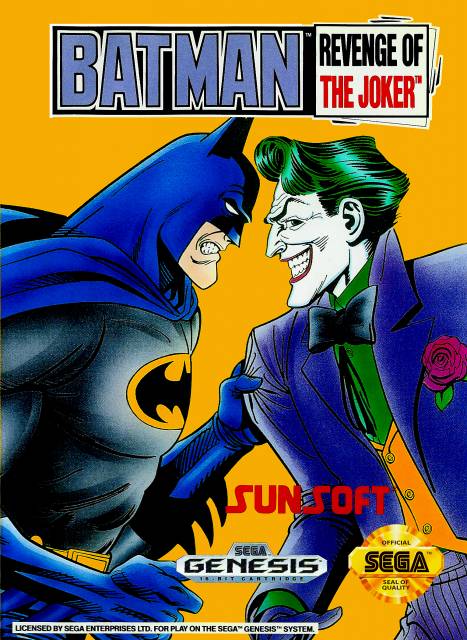
- Developer: Ringler Studios
- Publisher: Sunsoft
- JP Release: N/A
- NA Release: November 1992
- EU Release: N/A
- Franchise: Batman / DC Comics
- Genre: Platformer
- Theme: Parents Still Dead
- Premise: The Joker's back to pull off his tricks, and maybe a boner or two, in Sunsoft's follow-up to their successful NES platformer. You're laughing. We get two Batman licensed games in two months, and you're laughing.
- Availability: No rereleases. Given the source, I don't think we should expect one either.
- Preservation: Turns out there's both a "Revenge of the Joker" and a "Return of the Joker". Take that, Star Wars! You only wish you had the Clown Prince of Crime involved in your silly space opera, or his famous VA Mark Hamill. First released on NES, Revenge (or Return, as it was on Nintendo's sanitized system) is both a sequel to Sunsoft's NES Batman and a spiritual sequel: that is, Return of the Joker has an iterative approach to its platforming that clearly ties the two games together, but is thematically based on the original comics rather than the Burton movie franchise. The license for Batman Returns was given to other developers, as we found out last entry with, well, Batman Returns (MA XXII). The obvious difference between Revenge (Genesis) and Return (NES) are the 16-bit graphics: small-time contract developers Ringler Studios were brought in to polish those up - we last saw them with Mario Lemieux Hockey (MA XIV), a game that local oaf Dan Ryckert decided needed to be ranked alongside all the Super Mario games in one of his recent stream challenges.
334: Disney's TaleSpin
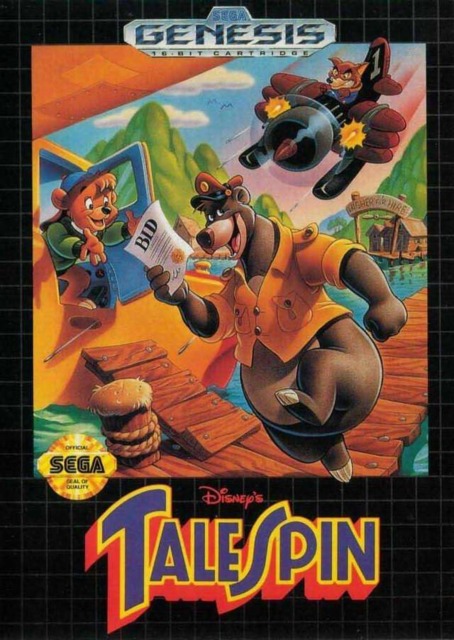
- Developer: Interactive Designs
- Publisher: Sega
- JP Release: N/A
- NA Release: November 1992
- EU Release: 1992-12-14
- Franchise: TaleSpin / Disney
- Genre: Platformer
- Theme: Friends For Life Through Thick and Thin
- Premise: Higher For Hire is in financial trouble, so Baloo gets out of his plane - you know, the one thing that sets TaleSpin apart from its peers - to go hunting for the company's missing cargo on foot.
- Availability: No rereleases, and seeing as this is a Disney product there's probably not going to be. There was a TaleSpin game in the Disney Afternoon Collection, but it wasn't this one (though that one was arguably better). Maybe wait for Kingdom Hearts IV?
- Preservation: We've dabbled in these waters before, but Sega had a competing "Disneyland" to the NES/SNES "Disneyworld" where we'd see the same Disney properties get licensed for both systems but end up as very different games. Usually, at least; there was some overlap with Virgin Interactive's The Lion King and The Jungle Book games, and the Aladdin games for those respective consoles were so similar that it mostly came down to a matter of preference. Nintendo had the backing of Capcom for their Disney-fied adventures, so they were usually ahead; Sega, conversely, lent their version of the licenses to any reliable contract developer they could find, which made the Genesis Disney games a little more uneven. TaleSpin, based on the show of the same name from Disney's wildly successful Saturday morning/afternoon cartoon block (which also included Ducktales, Chip N' Dale: Rescue Rangers, and others), came to us courtesy of Interactive Designs: this generically named company has been featured only once before on here, with the similarly jungle-based cartoon license Greendog: The Beached Surfer Dude! (MA XXI).
335: Gods
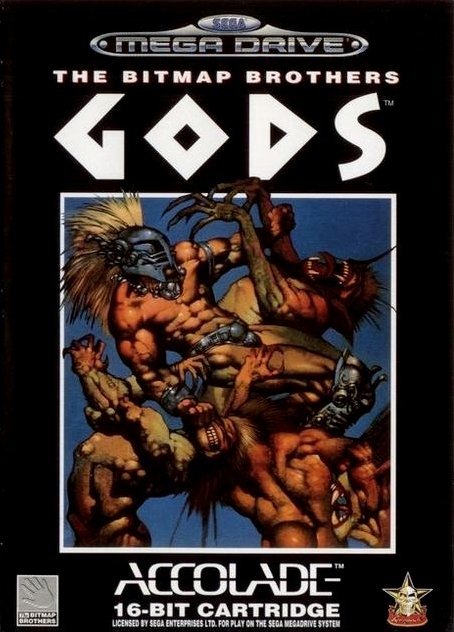
- Developer: Graftgold
- Publisher: Mindscape (NA) / PCM Complete (JP) / Accolade (EU)
- JP Release: 1993-03-26
- NA Release: November 1992
- EU Release: 1993-11-26
- Franchise: N/A
- Genre: Platformer
- Theme: Muscles
- Premise: The Greek gods ask a mortal warrior to help them solve the small issue of a coup led by a quartet of guardians. The mortal asks but for one reward: to become a god themselves.
- Availability: Gods fans are in luck - it just got remastered for Steam, PS4, XB1, and Switch. Still a bit of an eyesore, but the modern gameplay tweaks were appreciated by its reviewers.
- Preservation: Much to unpack here. This is the third game from The Bitmap Brothers to be ported to the Genesis - we only saw the previous two semi-recently, with Xenon 2: Megablast (MA XXII) and Speedball 2 (MA XV). However, they were not behind this particular port: that job went to fellow UK outfit Graftgold, which we'll be meeting again later this same episode of the Mega Archive. Like all of The Bitmap Brothers games during their peak in the early 90s, they drew upon a lot of talent external to the game industry: the music was composed by synth musician John Foxx (founder and former lead vocalist for Ultravox, of "Vienna" fame, though by that point Midge Ure had taken over) while the cover art was created by Simon Bisley, a 2000AD/DC Comics artist possibly best known outside the comic book world as the inspiration for Simon Pegg's character from Spaced. The game itself is something of an odd duck: while it looks like a mindless action-platformer, there's a cautiousness that gets ingrained in its players after they rush in and die too easily, with various inventory puzzles to wrap one's mind around. It also incorporates an early version of "adjustable difficulty" where enemies get smarter and hit harder if the player is doing too well (and vice versa). Being the impatient tyke I was back in 1991 when it debuted on Atari ST, I never got too far through it.
336: Home Alone
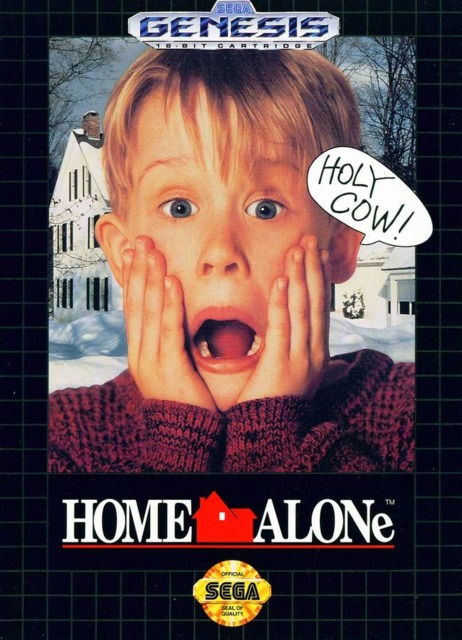
- Developer: Brian A. Rice
- Publisher: Sega
- JP Release: N/A
- NA Release: December 1992
- EU Release: November 1992
- Franchise: Home Alone
- Genre: Action / Strategy
- Theme: Home Invasions and Child Neglect are Funny
- Premise: Kevin McCallister's been left home alone over the holidays and takes it upon himself to protect the entire neighborhood in this stakes-raising loose adaptation. Remembering being able to leave your home for Christmas vacation? Or for any other reason?
- Availability: It wasn't and won't ever be rereleased, but you can probably get a copy for a few bucks on eBay. Just remember to keep the change, you filthy animal.
- Preservation: This particular Home Alone tie-in was dropped to coincide with the December 1992 cinematic release of Home Alone 2: Lost in New York, oddly enough (which notoriously featured Donald Trump in a brief cameo, who would coincidentally also lose in New York along with many, many other states in the 2020 Presidential Election). I suppose it made sense to release a Home Alone game while the "Castle Doctrine for Babies" iron was briefly reignited (maybe while also tumbling towards Daniel Stern's head). I'm digressing because I don't think anyone could imagine a Home Alone game being all that good; though unlike the generic THQ platformer (for NES/SNES/GB) this version developed by Brian Rice, Inc. puts a correct amount of emphasis on Kevin's trap preparation and resourcefulness. It's more in the style of that NES Friday the 13th game, as half the struggle is getting over to the house currently in peril and saving the day before starting the loop over again. Get there too late, and the Wet Bandits will have completely emptied and subsequently flooded the house. That last part always seemed weirdly spiteful, though I guess it's better than the first draft screenplay's idea of "the Upper Decker Bandits".
337: Indiana Jones and the Last Crusade
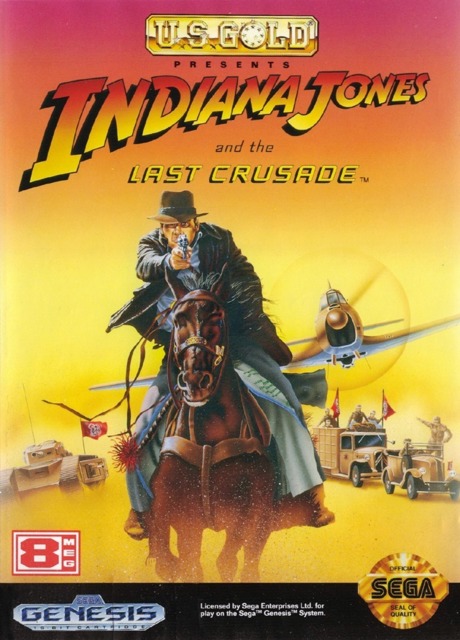
- Developer: Tiertex
- Publisher: U.S. Gold
- JP Release: N/A
- NA Release: November 1992
- EU Release: December 1992
- Franchise: Indiana Jones
- Genre: Platformer
- Theme: No Ticket
- Premise: Indy and his wacky dad Henry Sr. (R.I.P. Sean Connery, I swear I don't time these things) set out to stop the Nazis from claiming the Holy Grail, and with it the power of immortality.
- Availability: This version is out of print, but you can get the Last Crusade LucasArts graphic adventure game on GOG. It was definitely the superior choice back then. Grab Fate of Atlantis too while you're there.
- Preservation: You know that any Last Crusade game that lets you play the movie's River Phoenix prologue as a fully adult Indiana Jones is going to be good. The first ludonarrative hurdle and they all just faceplant right over it. So, this is one of the two widespread video game adaptations of the 1989 movie that capped the original Indiana Jones trilogy, which on computers were conveniently subtitled "The Graphic Adventure" and "The Action Game" respectively: this game would be the unfortunate latter, which like most action games for home computers at the time is kinda not great. Tiertex, the developer behind almost all versions of "The Action Game", built the Genesis version from the ground up but it still suffers from the same boneheaded design decisions that made this and other versions an overly difficult, frustrating mess. How many platformers have you played where hitting the ceiling (even when it isn't spiked) will cause health loss? We'll be meeting with Indy again one last time on the Genesis in 1994, but... well, our situation won't have improved.
338: Mick & Mack as the Global Gladiators
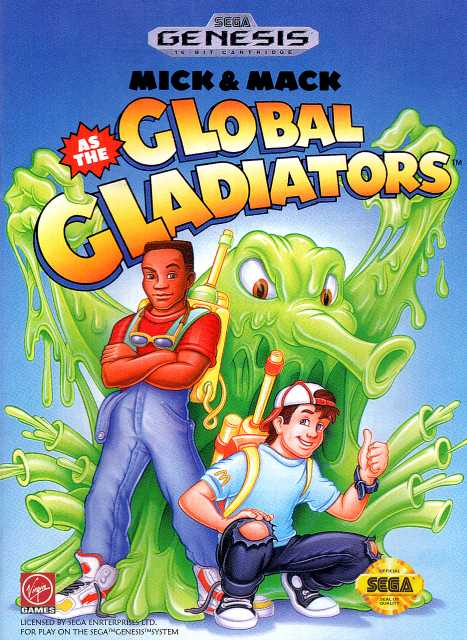
- Developer: Graftgold, Virgin Interactive
- Publisher: Virgin Interactive
- JP Release: N/A
- NA Release: November 1992
- EU Release: April 1993
- Franchise: McDonald's
- Genre: Platformer
- Theme: Littering is Bad
- Premise: Mick and Mack return to clean up this filthy world of ours, protecting future generations from all the greasy Big Mac fatbergs and plastic cups and straws choking the oceans. Wait, who endorsed this game again?
- Availability: Ironically, I think the majority of this game's copies are now stuffed in landfills.
- Preservation: Told you we'd be seeing Graftgold again very soon. The UK-based devs had a memorably busy introduction to the Sega Mega Drive, putting out their first two games for it within the same month. They'll have one more (Europe-exclusive) release we'll get around to when (or if) we cover 1993. Since it isn't evident from the box art, Global Gladiators is a McDonald's licensed game and the follow-up to M.C. Kids, which was released earlier that same year for NES. Even though McDonald's contributes to more than their fair share of ecological disasters, Global Gladiators has an environmentalist theme that puts its diverse heroes in charge of saving the planet from pollution monsters and other toxic hazards. They do this with a slime-projecting gun unfortunately dubbed the "GooShooter." Despite the heavy-handed messaging and licensing grossness, Global Gladiators is still halfway decent: that's because it, along with fellow junk food mascot turned video game hero Cool Spot, was an early project of David Perry - the Virgin Interactive programmer that would later go on to form Shiny Entertainment and create Earthworm Jim. I think I still prefer the block-tossing platforming of M.C. Kids, but for a preachy hypocritical jeremiad that places the blame of environmental collapse squarely on private citizens who don't bother to sort their glass and plastics, Global Gladiators could've been far worse.
339: The Miracle Piano Teaching System
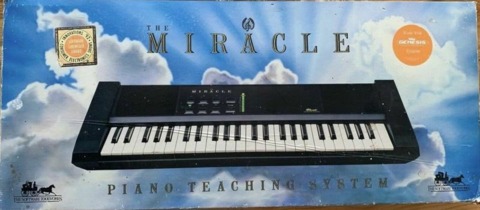
- Developer: The Software Toolworks
- Publisher: The Software Toolworks
- JP Release: N/A
- NA Release: November 1992
- EU Release: N/A
- Franchise: N/A
- Genre: Educational
- Theme: Plastic Instrument Games? Those Will Never Take Off
- Premise: Are your kids are too busy playing on their damn video game box to take their piano lessons? What if I told you there was a way to combine the two, and all it would cost is a month's mortgage payment?
- Availability: Unsurprisingly rare to find, especially copies that includes the pack-in keyboard peripheral (which is needed to play the game).
- Preservation: The Miracle Piano Teaching System is something I've encountered before on the Giant Bomb wiki (via the SNES), but certainly not something I ever encountered in the wild as this 16-bit piano tutor video game never progressed beyond the United States. I imagine these long, chunky boxes took up real estate in Babbage's stores up and down the US in the early '90s, turning off any prospective buyer either because of the $500 price tag (adults) or by being an educational game full of stuffy classical music (kids). It has a few contemporary tracks in there too just from perusing the playlist, but it's mostly the stuff you'd expect from a piano teacher: Chopsticks, Ode to Joy, and so on. California-based educational game maker The Software Toolworks will only appear on our radar once here for the Mega Archive, but they'll show up a few more times on the Mega Archive CD once that returns. Elsewhere, they're celebrated (if that's the right word) for Mario is Missing! and Mavis Beacon Teaches Typing.
340: Chakan: The Forever Man
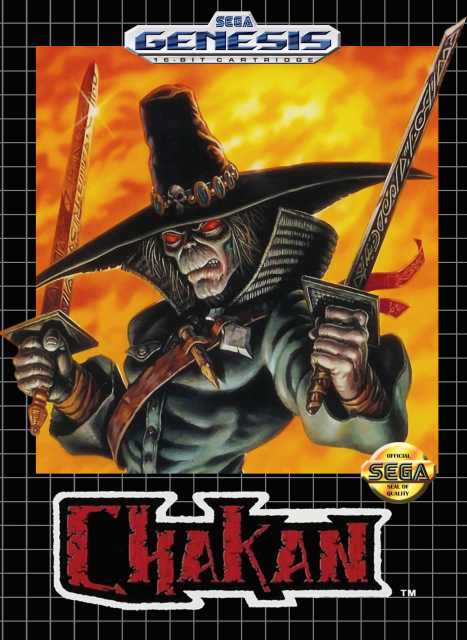
- Developer: Extended Play
- Publisher: Sega
- JP Release: N/A
- NA Release: November 1992
- EU Release: February 1993
- Franchise: N/A
- Genre: Platformer
- Theme: '90s Comics in a Microcosm
- Premise: Chakan, the Forever Man, has all the time in the universe but little patience left for living. His only means of earning a final death is to rid the mortal world of the evil forces that plague it.
- Availability: No ports, no rereleases, no successors. Really more of a Chakan't these days.
- Preservation: Sure, let's chat about The Forever Man for a spell. Created by cartoonist Robert A. Kraus, Chakan is a swordsman who was too awesome and cool to die, but has now lived so long that he suicidally rushes into peril to finally end his centuries-long existence in honorable battle. The video game adaptation was the last to be worked on by Recreational Brainware, which we last saw with Taz-Mania (MA XIX). Extended Play, a company created by many of the same people, existed just long enough to finish the development Brainware started on Chakan before it too dissolved and its founders went their separate ways. Notorious for its difficulty and dark, trippy visuals, Chakan left an impression on the many who rented it from Blockbuster but could never beat it. It had a few interesting ideas for mechanics too, including a potion mixing power-up system, a (then rare) double-jump, and a multidirectional swordfighting system where you held the attack button and moved in the angle you wanted to strike, which kinda made Chakan look like he was directing airport traffic. There's been a few unsuccessful attempts to revive Chakan since, most notably for the Dreamcast in 2001, but fans are still hoping a reboot will happen someday. (For way more detail on Chakan's development than you could ever want, check out this article on Sega-16.)
